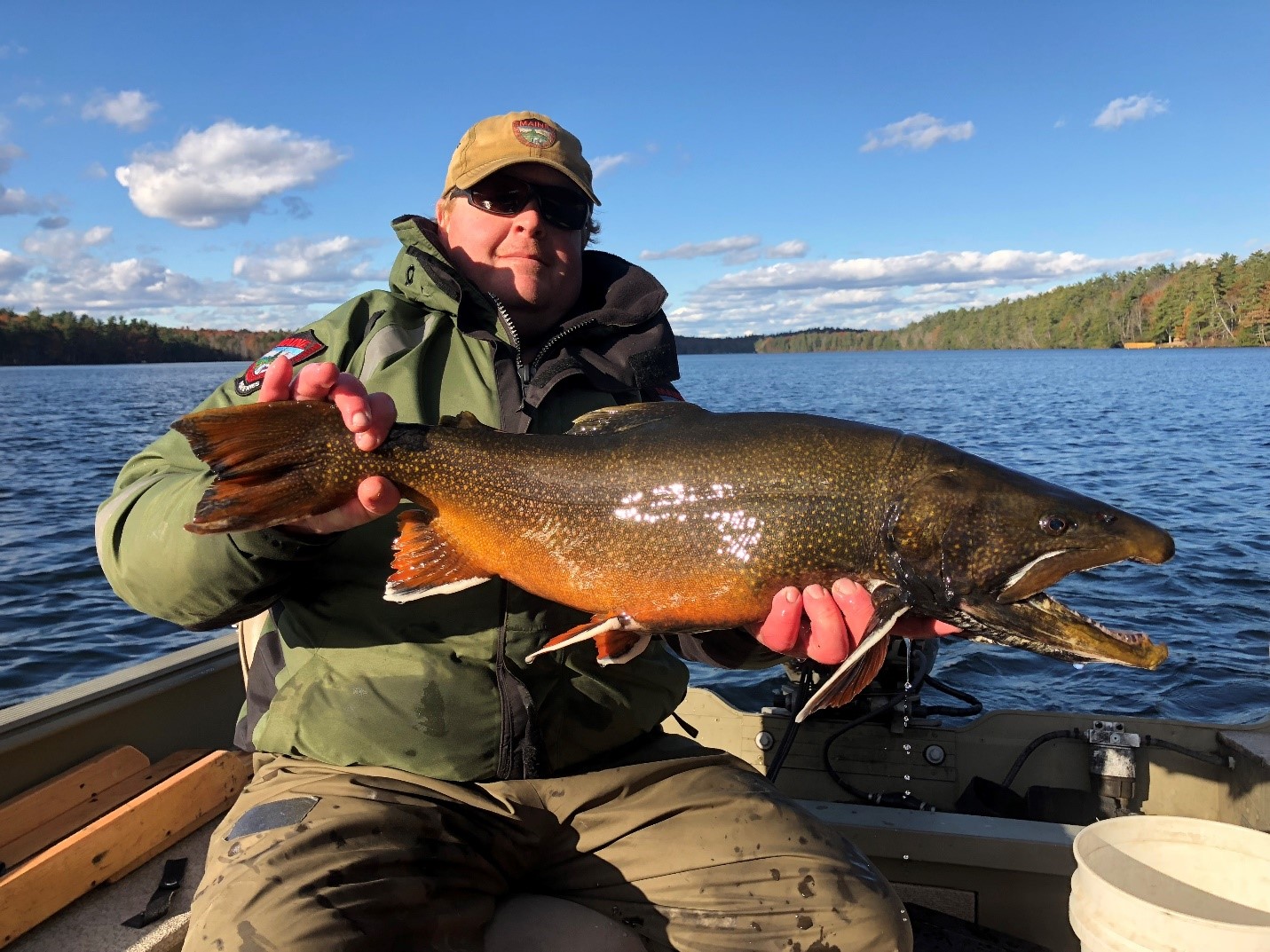November 12, 2020 at 12:41 pm

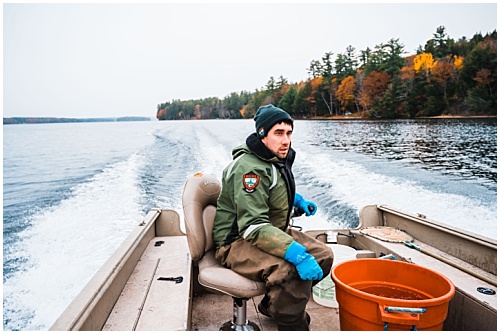
MDIFW Fisheries Resource Biologist Nick Kalejs driving to the trapnet location. Photo by Tory Johnson/MDIFW
For fisheries biologists in Maine, fall means many things—cooler water temperatures, colorful spawning fish, and the last few times taking the boat out for the season. One of the management techniques that allows us to experience all of these at once is our annual task known as trapnetting. Essentially, trapnetting is a reliable way for us to survey many populations of fish that are spawning in lakes across the state. A trapnet is most often used as a tool for collecting data on landlocked salmon, but can readily catch brook trout, splake, and other species as well.

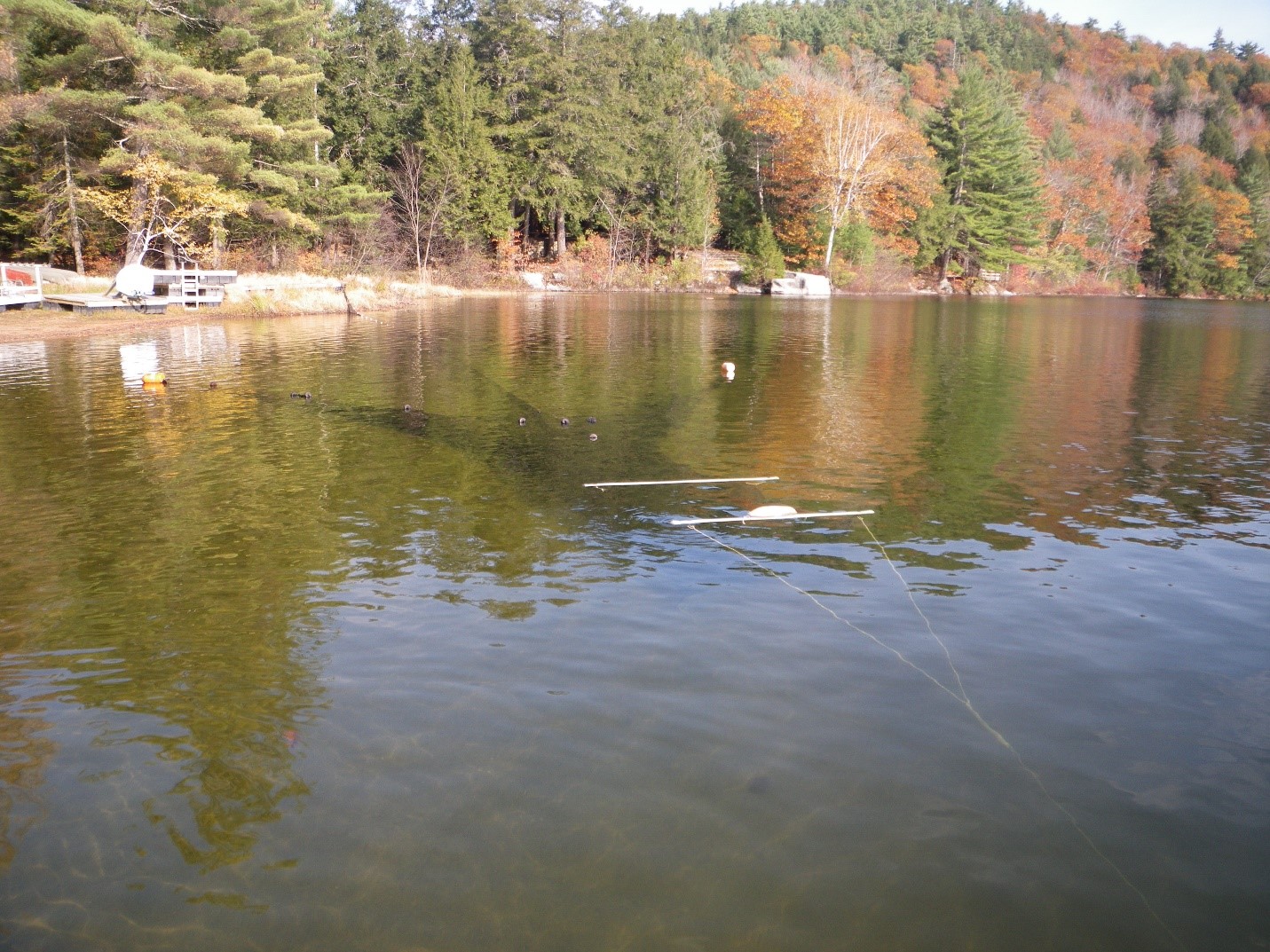
Trapnet setup showing main body of net and vertical lead net heading towards shore. Photo by Brian Lewis/MDIFW
To collect data, we first need to collect fish. A trapnet works by using a vertical lead net to connect the shore with the trapnet. Mature fish cruise the shoreline heading for spawning tributaries, but bump into our lead net and are directed towards the trapnet instead. There, a wide, cone-shaped entrance funnels fish into a holding pen. Fish can easily find the large entrance, but cannot find the small exit, and so stay in the holding area until we arrive to collect data. We check trapnets often, so fish never need to stay in place for too long.

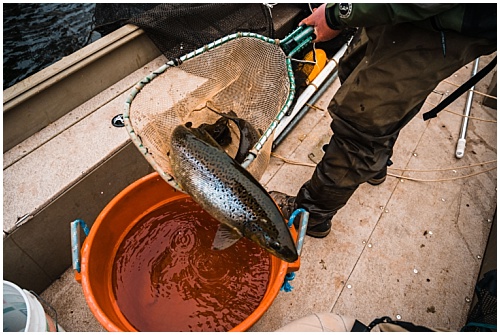
Photo by Tory Johnson/MDIFW
Before analyzing fish, we anesthetize them for safe handling. We then record the length, weight, sex, and maturity of each fish, note any fin clips or collect scales to determine each fish’s age, and send the fish back on their way into the lake. It is a quick process for the fish, but from the data we collect, we learn how the fish are growing, what year-to-year survival may look like, estimate population size, and gauge whether stocking rates and fishing regulations are meeting our goals for a particular water. In many ways, trapnetting is one of our most powerful field data collection techniques.

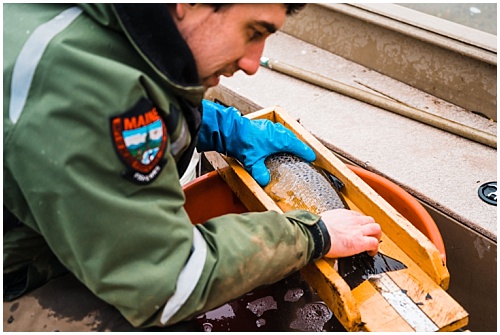
Nick measuring a male landlocked salmon. Photo by Tory Johnson/MDIFW
Though the trapnetting season begins earlier in more northern parts of the state, in southern Maine our season usually begins around the middle of October. This means we are often lucky enough to experience fall colors on the trees and the fish at the same time. We rotate the lakes that we trapnet each year, but annually sample some of our larger landlocked salmon waters, such as Thompson Lake. Trapnetting is often a biologist favorite for field work, and helps us to continue building our knowledge of the many lakes and ponds we have in the area and statewide. So, if you see us out this fall, bundled up against the biting wind and with fish-weighing scale in hand, you can bet that we are out trapnetting and managing the many fish that call Maine home.

